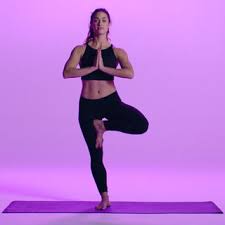When you see someone practicing the dog pose or the camel pose, you can easily understand that the person is doing yoga, even if you are not very interested. But yoga is much more than these small parts that make up it.
When we look at the types of yoga that every yogi has developed by adding something from himself in the distant and recent past, we see that they are divided into dozens of different disciplines.
One of them is power yoga, which many people can easily adapt to with its fitness-related aspect. In this article, we have examined power yoga, which is one of the yoga varieties that best forms the basis of strength, endurance and flexibility, for you.
What is Power Yoga?
Power yoga, also known as power yoga; It is one of the types of yoga that includes a series of endurance-focused exercises and deserves its name with its challenging aspect. The term, first used in the late 1980s, was coined by Beryl Bender Birch and Bryan Kest. Later, Beryl Bender Birch explained what power yoga is in her book of the same name, published in 1995.
This new form actually derived from Ashtanga, Bikram, and Vinyasa yoga; it has a more intense and flowing style than them.
Power yoga, as flexibility and meditation feet are a little behind, consists of movements based on muscle strength and rises on the basis of balance; more closely associated with fitness.
For this reason, power yoga can look more like an aerobics class than a yoga experience when viewed from afar. This type, whose target audience is athletes who want to create more flexibility in their body, includes a flow almost as intense as a cardio workout, with mindful breathing exercises and dynamic postures.
What Is The Difference From Other Types Of Yoga?
Power yoga is a type of yoga that contains many types of yoga, but none of them. However, the yoga form that is most often compared or confused with is vinyasa, another version of ashtanga. Therefore, it differs from other types of yoga in three different areas, both as a revised version of ashtanga and vinyasa.
- Speed : Just like vinyasa, power yoga is practiced much faster compared to the more classical version of hatha yoga. It is not the slow, conscious, and spiritual form of Hatha yoga; It is purely physical. For this reason, it is also called a yoga workout because it is practiced fast enough to activate the cardiovascular system and work the metabolism.
- Number of poses and duration : Compared to many types of yoga, power yoga has very few poses. It includes a group pose that is held long, rather than short transitions, that works the musculature more. These poses often consist of postures that focus on a particular muscle group of the body. For the same reason, compared to vinyasa, power focuses more on physical endurance than breath management.
- Sequence : Power yoga starts with the basic and relatively easy poses and gradually gets harder. The purpose of this is to increase endurance by warming up the muscles. Many of the poses in vinyasa and ashtanga are also used here, but in a different order. Moreover, it does not have a rigid and delicate sequence as in ashtanga; The movements are completely under the control of the instructor and are performed in the order determined by him.
- Flow : The accuracy and perfection of the movement is important for hatha and vinyasa. In vinyasa, a little more breathing comes to the fore, while flexibility and harmony of body and mind are essential for hatha. In power yoga, flow is not that important. It is possible to dynamically move from one pose to the next by exhaling as the position changes.
For more detailed information about Hatha yoga and vinyasa yoga, “ Hatha Yoga vs. You can browse our content titled “Vinyasa Yoga “.
Power Yoga Benefits
Power yoga includes the benefits of exercise as well as the general benefits of yoga, as it has a high-intensity and muscle-focused flow compared to other types of yoga. We can summarize them under three headings:
- Cardiovascular health and weight loss: Quick movements during postures activate the metabolism by increasing the heart rate and accelerating the blood flow, thus making the cardiovascular system work. This system, which strengthens the heart and lungs, also promotes weight loss and fat burning ( 1 ) .
- Strength and endurance: Power yoga postures, which are performed for a long time and in a controlled manner, contribute to the strength of the body and increase the endurance of the body by focusing on the muscles in different parts of the body. A study of Parkinson’s patients shows that doing yoga can directly increase muscle strength ( 2 ) .
- Stress management: Although the meditative aspect of power yoga is known to be weaker than other types of yoga, it is possible to say that it is at least as effective as others in managing stress, reducing anxiety and relaxing. A study on this subject also reveals that doing yoga is an important factor in reducing cortisol levels, which is defined as the body’s stress hormone ( 3 ) .
Read More About: Anti-Aging: Face Yoga
Read More About: How an entrepreneur can start accepting payments in one step



